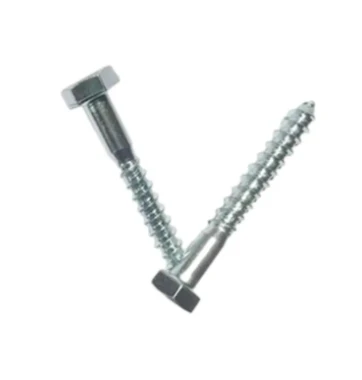Dic . 14, 2024 11:05 Back to list
hex nut sizes
Understanding Hex Nut Sizes A Comprehensive Guide
When it comes to the world of fasteners and hardware, hex nuts are among the most commonly used components. These simple yet effective devices play a vital role in securing various objects and structures, from machinery to furniture. A key aspect that ensures their usability and compatibility is the size of the hex nuts. In this article, we will delve into the different sizes of hex nuts, their specifications, and how to choose the right one for your needs.
What are Hex Nuts?
Hex nuts are fasteners with a hexagonal shape designed to work with bolts and screws. They are typically made from materials such as steel, stainless steel, brass, or nylon, enabling them to withstand various environmental conditions. The primary function of a hex nut is to create a secure bond by being threaded onto a bolt, allowing two or more components to be held together tightly.
Size Specifications
Hex nut sizes are determined largely by two measurements the diameter of the bolt they are meant to fit and the thickness of the nut itself. The diameter is typically measured in either inches or millimeters, with common sizes including 1/4, 3/8, 1/2, and so on for imperial measurements, while sizes like M3, M4, and M10 are frequently used in the metric system.
Besides the nominal size, hex nuts are also categorized by their thread pitch — the distance between the threads. For example, a hex nut with a designation of M10x1.5 refers to a 10mm diameter and a thread pitch of 1.5mm. The thread pitch is crucial because it ensures that the nut fits snugly onto the associated bolt, preventing loosening or stripping.
Standard Sizes
In the imperial system, hex nuts commonly come in sizes such as
- 1/4 - 20 - 5/16 - 18 - 3/8 - 16 - 1/2 - 13 - 5/8 - 11
For metric sizes, they include
hex nut sizes

- M3 (3mm) - M4 (4mm) - M5 (5mm) - M6 (6mm) - M8 (8mm) - M10 (10mm)
It's important to note that these sizes can cover a range of thread pitches, which also affects compatibility and performance.
Choosing the Right Hex Nut Size
Selecting the appropriate hex nut size is crucial for the integrity of any assembly. Here are some guidelines to help you make the right choice
1. Know Your Bolt Size The first step is to know the diameter of the bolt that the hex nut will be paired with. Use a caliper to measure the bolt if you're unsure.
2. Check Thread Pitch It's vital to check the thread pitch to ensure compatibility. Using the wrong pitch can lead to cross-threading and potential failure of the assembly.
3. Material Matters The material of the hex nut should be compatible with the bolt and the environment it will be used in. For instance, stainless steel nuts are ideal for outdoor applications due to their corrosion resistance.
4. Consider Height and Width While the width across the flats (often referred to as the “AF” size) and the height of the nut don't directly affect the fit with the bolt, they do influence how easily you can tighten or loosen the nut with a wrench.
Conclusion
In conclusion, understanding hex nut sizes is essential for anyone involved in construction, manufacturing, maintenance, or even DIY projects. With a wide range of sizes available in both imperial and metric systems, choosing the right hex nut can ensure the strength and safety of your assembly. Always prioritize compatibility in size, thread pitch, and material to achieve optimal results in your projects.


